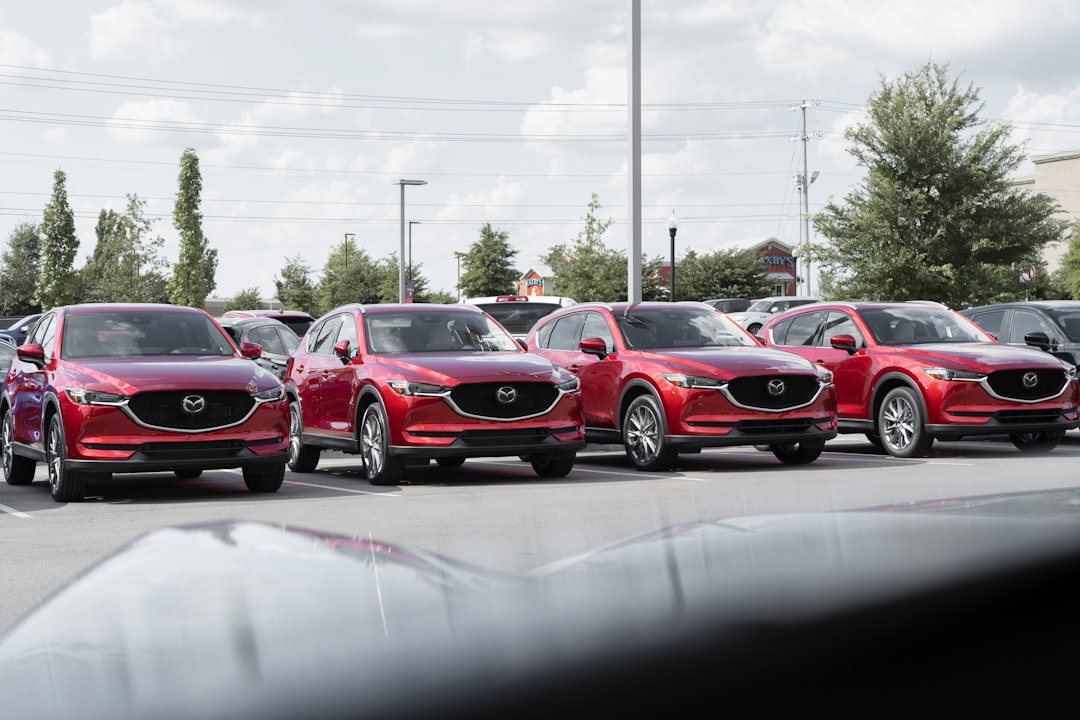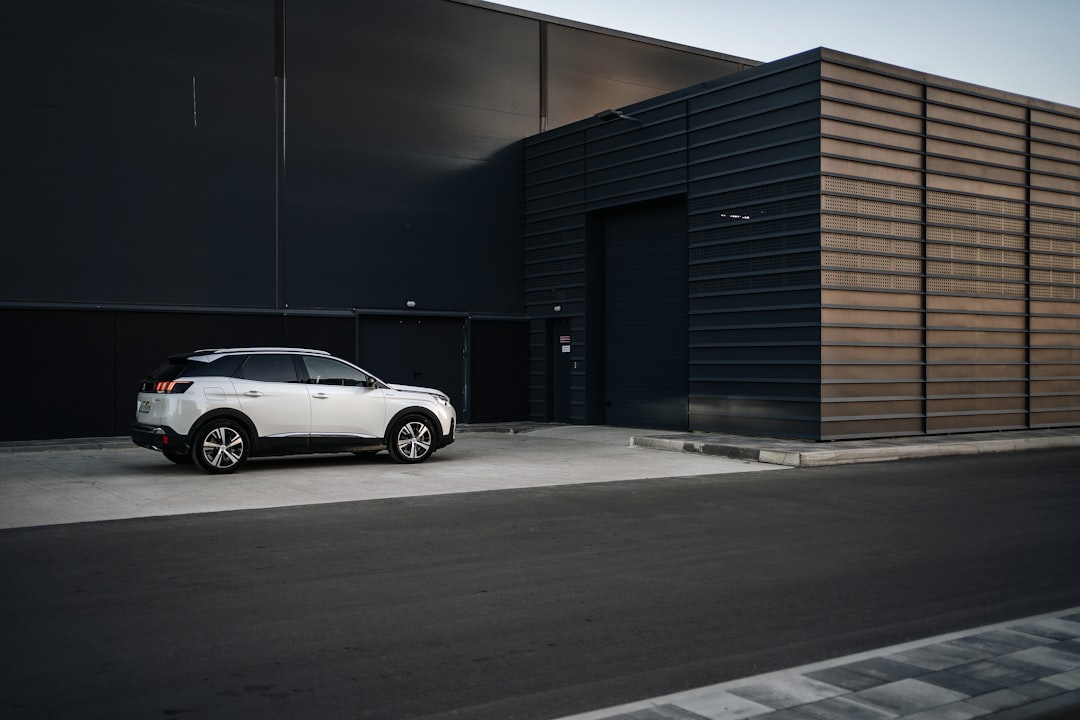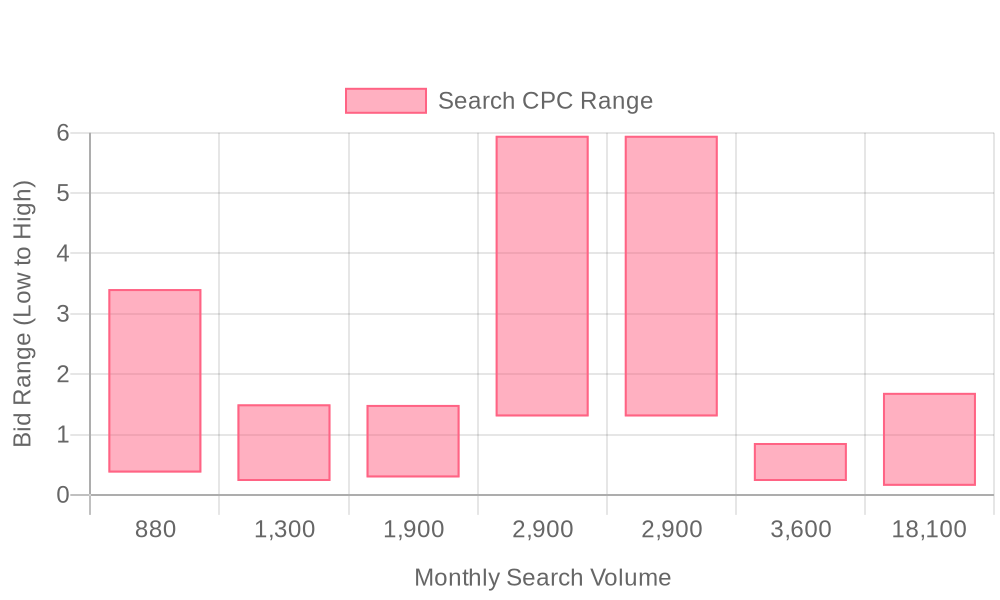
Supercharge your lead generation with a FREE Google Ads audit - no strings attached! See how you can generate more and higher quality leads
Get My Free Google Ads AuditFree consultation

No commitment
Supercharge your lead generation with a FREE LinkedIn Ads audit - no strings attached! See how you can generate more and higher quality leads
Get My Free Google Ads AuditFree consultation

No commitment
Supercharge your lead generation with a FREE Meta Ads audit - no strings attached! See how you can generate more and higher quality leads
Get My Free Google Ads AuditGet My Free LinkedIn Ads AuditGet My Free Meta Ads AuditFree consultation

No commitment
Supercharge your lead generation with a FREE Google Ads audit - no strings attached! See how you can generate more and higher quality leads
Get My Free Google Ads AuditFree consultation

No commitment
In today's digital landscape, Google Ads serves as a crucial tool for businesses aiming to convert high-intent traffic into profitable leads. For companies specializing in auto generators, utilizing Google Ads strategically not only enhances their visibility but also allows them to target and attract potential customers actively searching for automotive solutions. This guide is designed to help you leverage Google Ads effectively within the auto generators sector, ensuring that every ad dollar spent aligns with your business goals. We'll explore strategies, best practices, and the unique advantages Google Ads offers to this industry, addressing challenges such as missing high-value prospects due to lack of tracking and visibility into anonymous traffic.

A data-driven approach to Google Ads for auto generators unlocks a measurable pipeline by targeting prospects with clear purchase intent. Maximizing your campaign’s impact means using precision targeting, tailored creative, and unified analytics to increase both lead quality and marketing ROI.
Revenue teams focused on auto generators benefit from building a search strategy around the distinct needs of industrial buyers. Integrating Google Ads with rich audience data and intent signals ensures that every dollar is aligned with high-value commercial accounts.
This step-by-step approach empowers B2B teams in the auto generator space to attract, convert, and nurture high-value leads, driving sustained growth and measurable revenue outcomes. Ready to see results? Get started for free with Sona.

Auto generator manufacturers and distributors compete in a market defined by complex buyer journeys and high-value deals. Buyers in this sector often conduct in-depth research before making significant investments, which means capturing attention at the right moment is essential for pipeline growth and long-term revenue.
Google Ads empowers auto generator businesses to intercept decision-makers during high-intent searches, outperforming general awareness channels that rarely convert at the same rate. Unlike passive outreach on platforms like LinkedIn, search-based advertising ensures your message appears precisely when prospects are actively seeking solutions, leading to more qualified conversations. For a deeper dive into effective ad strategies, explore these Google Ad examples and AI tools that can streamline your creative process.
For products with substantial margins, every new customer can significantly impact bottom-line results. While email nurtures existing relationships, Google Ads excels at surfacing your offerings to net-new accounts ready to invest in mission-critical equipment. This approach accelerates deal cycles and supports rapid acquisition efforts, especially in periods of market volatility or surging demand. To learn more about optimizing your demand generation, visit our marketing analytics blog.
The ability to react instantly to shifting market conditions is another advantage for auto generator marketers. When seasonal events or unexpected outages drive spikes in search traffic, Google Ads allows for agile campaign adjustments—maximizing reach when urgency is highest. Integrated analytics further enhance this agility by tying ad performance to broader marketing and sales data. Marketers leveraging unified data can accurately identify which keywords, audiences, and creative assets deliver the strongest ROI, refining spend allocation with precision. You can also get started for free with Sona to unlock unified analytics and campaign insights.
Integrating Sona Identification and Sona Audiences signals into Google Ads campaigns elevates targeting accuracy. By moving beyond anonymous clicks to pinpoint specific companies and in-market buyers, auto generator brands can shift budget toward high-conversion accounts and dynamically update audiences as prospects progress through the funnel. This level of data-driven optimization ensures that every advertising dollar is spent with measurable impact, supporting scalable growth in a competitive landscape.


Growth-minded automotive marketers consistently outperform by expanding reach beyond standard digital ad channels. Uncovering new opportunities requires a blend of niche targeting, competitive intelligence, and data-driven retargeting to capture untapped demand. For ongoing insights on marketing analytics and demand generation, explore the latest blog articles.
A data-unified approach ensures every touchpoint, from initial search to retargeting, is informed by the latest account activity and intent. This maximizes your return on ad spend, particularly in competitive niches like auto generators, where understanding buyer behavior at every stage is critical for sustainable growth. If you’re ready to capture more pipeline, get started for free with Sona today.

Audience segmentation is essential for auto generator marketers aiming to maximize return on ad spend and drive meaningful engagement. Accurate segmentation ensures your campaigns reach the right buyers, increase conversion rates, and reduce wasted budget. For more strategies on optimizing your campaigns, explore our marketing analytics blog.

| Industry | Keyword | Monthly Search Volume | Competition Level | Low Bid | High Bid |
| Auto Generators | auto start generator | 880 | HIGH | 0.37 | 3.41 |
| Auto Generators | 220 generator | 1300 | HIGH | 0.23 | 1.5 |
| Auto Generators | generator honda | 1900 | HIGH | 0.29 | 1.49 |
| Auto Generators | auto generators | 2900 | HIGH | 1.3 | 5.95 |
| Auto Generators | car generator | 2900 | HIGH | 1.3 | 5.95 |
| Auto Generators | remote start generator | 3600 | HIGH | 0.23 | 0.86 |
| Auto Generators | car alternator | 18100 | LOW | 0.15 | 1.69 |
Effective keyword strategy is pivotal for automotive generator companies aiming to drive intent-rich traffic and maximize paid search performance. Leveraging campaign data and revenue attribution, teams can focus budgets on the search terms that directly translate to qualified pipeline and new business.
Automotive marketers who unify their keyword, audience, and intent data can optimize spend, personalize outreach, and consistently drive pipeline from high-impact search terms. Precision in keyword strategy, powered by deep visibility into account activity and conversion outcomes, is essential for winning in a competitive automotive PPC landscape. For further insights on building effective campaigns, explore retargeting strategies that keep your brand top of mind for high-intent prospects. To see how you can accelerate campaign effectiveness, get started for free with Sona.
Modern automotive marketers need more than generic PPC tactics to stand out in the competitive auto generators segment. Data-driven, granular execution is essential for turning ad spend into measurable pipeline and sustainable revenue. For more industry insights, visit our marketing analytics blog.
Effective automotive digital marketing starts with structured keyword research. Organize keywords by generator type, location, and customer intent, leveraging search volume and competition data from the Google Keyword Planner for prioritization. Adding local modifiers ensures relevance for buyers seeking auto generators in specific regions or cities, while negative filters prevent budget waste on irrelevant queries such as unrelated vehicle parts or repair services.
Integrating real-time visitor identification elevates targeting precision. By pinpointing which companies and users are actually searching for auto generators, marketers can focus keyword strategies on high-value segments. Syncing enriched audience lists into platforms like Google Ads or major CRMs means campaigns always reach in-market accounts, not just anonymous clicks.
Compelling ad copy hinges on addressing real buyer pain points: reliability, installation speed, and after-sales support. Headlines should be direct and benefit-focused, using language that resonates with both fleet managers and procurement teams. Including clear calls-to-action (“Get a Custom Quote” or “Compare Generator Models”) increases click-through rates and shortens the path to conversion. See Google Ad examples for inspiration on high-performing creative.
Marketers can further refine messaging by tracking real-time intent signals. When an account demonstrates high engagement—visiting product pages or downloading spec sheets—ad copy can dynamically adjust, highlighting features or offers that match the current stage in the buyer journey. This approach consistently outperforms static messaging, turning interest into qualified leads.
Landing pages must tightly align with ad messaging and user intent. For auto generator campaigns, this means showcasing detailed product specs, application guides, and trust signals such as certifications or customer testimonials. Streamlined forms and instant quote tools reduce friction, making it easy for prospects to take the next step. Discover actionable tips in our landing page optimization playbooks.
When landing page engagement is monitored in real time, marketers can identify which variations or CTAs move visitors further down the funnel. Insights from this data inform rapid A/B testing cycles, ensuring landing pages continuously evolve to maximize conversions for each segment, from OEM buyers to commercial fleet operators.
Ongoing optimization is non-negotiable for automotive PPC. Monitor campaign performance through granular attribution models that track both online and offline actions—such as demo requests, phone calls, and dealership visits—to establish true ROI. For guidance on attribution, see single vs. multi-touch attribution.
Dynamic audience management is essential as leads progress through the funnel. Automatically update retargeting lists to exclude recent converters and prioritize accounts showing renewed interest. Syncing audience and conversion data across ad platforms and CRM systems ensures all channels reflect the latest buyer status, driving coordinated, high-impact outreach. For deeper strategies, review retargeting strategies to capture missed opportunities and reinforce your brand with decision makers.
Ready to accelerate your automotive campaigns? Get started for free with Sona.
Expanding your presence in the auto generator market requires an intentional blend of education, data-driven engagement, and local relevance. Buyers in this segment often need both technical information and trust signals, so aligning your outreach with their journey is essential for sustained growth. For additional strategies on optimizing your marketing efforts, explore our latest blog articles.
Harnessing the power of Google Ads for auto generators can significantly enhance your marketing efforts, driving targeted traffic and increasing conversions. By mastering strategies tailored to the automotive sector, you can effectively reach potential customers and highlight the unique benefits of your products or services.
Throughout this exploration, we delved into the nuances of crafting compelling ad copy, selecting precise keywords, and leveraging data analytics to optimize ad performance. These tools and strategies are crucial for overcoming common challenges such as tight competition and fluctuating market demands. Successful implementation hinges on your ability to adapt and refine your approach continuously.
The journey toward effective Google Ads management in the automotive space opens up a world of possibilities. Embrace these strategies with confidence, knowing that every adjustment and insight gained brings you closer to achieving your marketing goals. With the right tools and knowledge, you can transform your advertising efforts into a powerhouse of lead generation and brand recognition.
To truly capitalize on these insights and elevate your marketing strategy, start for free to experience our platform's capabilities today. Let us help you streamline your go-to-market data and turn insights into action, paving the way for sustained growth and success.
Best practices include leveraging data-driven paid search, developing targeted keywords and audiences, aligning landing pages and creative, continuously optimizing campaigns, and integrating cross-channel marketing.
Effective Google Ads can be generated by understanding audience segments, using precision targeting and tailored creative, and employing unified analytics to enhance lead quality and marketing ROI.
Key strategies involve building keyword lists reflecting unique terminology, audience segmentation, dynamic retargeting, and continuous optimization using real-time campaign feedback.
Automation can be achieved by integrating CRM and ad sync features, using real-time intent signals, and leveraging tools like Sona for unified analytics and campaign insights.
Successful examples include search campaigns targeting high-intent queries, display ads for brand visibility, video ads for product education, and remarketing campaigns to re-engage potential buyers.
Join results-focused teams combining Sona Platform automation with advanced Google Ads strategies to scale lead generation

Connect your existing CRM

Free Account Enrichment

No setup fees
No commitment required

Free consultation

Get a custom Google Ads roadmap for your business
Join results-focused teams combining Sona Platform automation with advanced Meta Ads strategies to scale lead generation

Connect your existing CRM

Free Account Enrichment

No setup fees
No commitment required

Free consultation

Get a custom Google Ads roadmap for your business
Join results-focused teams combining Sona Platform automation with advanced LinkedIn Ads strategies to scale lead generation

Connect your existing CRM

Free Account Enrichment

No setup fees
No commitment required

Free consultation

Get a custom Google Ads roadmap for your business
Join results-focused teams using Sona Platform automation to activate unified sales and marketing data, maximize ROI on marketing investments, and drive measurable growth

Connect your existing CRM

Free Account Enrichment

No setup fees
No commitment required

Free consultation

Get a custom Google Ads roadmap for your business
Over 500+ auto detailing businesses trust our platform to grow their revenue
Join results-focused teams using Sona Platform automation to activate unified sales and marketing data, maximize ROI on marketing investments, and drive measurable growth

Connect your existing CRM

Free Account Enrichment

No setup fees
No commitment required

Free consultation

Get a custom Google Ads roadmap for your business
Over 500+ auto detailing businesses trust our platform to grow their revenue
Join results-focused teams using Sona Platform automation to activate unified sales and marketing data, maximize ROI on marketing investments, and drive measurable growth

Connect your existing CRM

Free Account Enrichment

No setup fees
No commitment required

Free consultation

Get a custom Google Ads roadmap for your business
Over 500+ auto detailing businesses trust our platform to grow their revenue
Our team of experts can implement your Google Ads campaigns, then show you how Sona helps you manage exceptional campaign performance and sales.
Schedule your FREE 15-minute strategy sessionOur team of experts can implement your Meta Ads campaigns, then show you how Sona helps you manage exceptional campaign performance and sales.
Schedule your FREE 15-minute strategy sessionOur team of experts can implement your LinkedIn Ads campaigns, then show you how Sona helps you manage exceptional campaign performance and sales.
Schedule your FREE 15-minute strategy sessionOur team of experts can help improve your demand generation strategy, and can show you how advanced attribution and data activation can help you realize more opportunities and improve sales performance.
Schedule your FREE 30-minute strategy sessionOur team of experts can help improve your demand generation strategy, and can show you how advanced attribution and data activation can help you realize more opportunities and improve sales performance.
Schedule your FREE 30-minute strategy sessionOur team of experts can help improve your demand generation strategy, and can show you how advanced attribution and data activation can help you realize more opportunities and improve sales performance.
Schedule your FREE 30-minute strategy sessionOur team of experts can help improve your demand generation strategy, and can show you how advanced attribution and data activation can help you realize more opportunities and improve sales performance.
Schedule your FREE 30-minute strategy session





Launch campaigns that generate qualified leads in 30 days or less.
